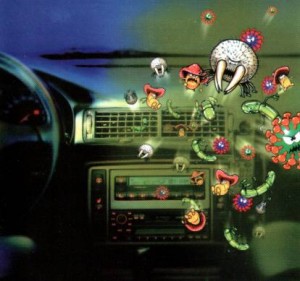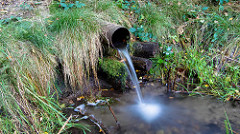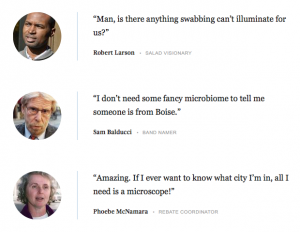I just got pointed to this letter written by the President of the Alfred P. Sloan Foundation Paul Joskow on “Research Integrity and Reproducibility” and it is definitely worth a read. It is available as part of the Sloan Foundation 2014 Annual report. It starts on pXiii. It is also available via Research Gate. And …
Videos of talks from the recent DOE-JGI User Meeting have been posted. There is also a Storify wrap up of the meeting: [<a href=”//storify.com/doe_jgi/2016-doe-jgi-genomics-of-energy-environment-meetin” target=”_blank”>View the story “2016 DOE JGI Genomics of Energy & Environment Meeting” on Storify]
Many cultural heritage materials, like statues and scriptures, are lost to microbial degradation. For these important relics of the past to continue to stand the test of time, it is important to be able to effectively test and identify microbes that will harm these materials. This 2016 review from SanmartÃn et al aims to evaluate traditional …
Tesla Motors showed off some tests of their amusingly-named “Bioweapon Defense Mode” on their blog earlier this week. While the demo is raising some skeptical eyebrows among actual biodefense experts, you don’t need crazy movie-plot scenarios to imagine the utility of a more serious approach to indoor air quality in vehicles — air quality in …
This article by Beth Mole is a fairly detailed summary of recent research on the effects of antimicrobial soaps. As we have mentioned before on microBEnet, antimicrobials increase resistance in the environment, wildlife, and people. In addition, the soaps are often not used for long enough to confer a benefit. The article particularly focuses on triclosan and triclocarban, …
New papers on microbes and the built environment. Microbes and fermenting households Samples collected through the Second Annual San Diego Fermentation Festival: From Sample to Multi-Omics Conclusions in under 48 Hours – Robert A. Quinn – mSystems (OA) (…) Here, we applied a novel integrated omics pipeline for the analysis of human and environmental samples in under …
Legionellosis has emerged as a major public health threat related to the built environment, and outbreaks of Legionnaires’ disease in New York City and Flint, Michigan in 2015 have drawn increased attention to the problem. Cases reported to CDC have increased more than four-fold since 2000 with over 5000 cases reported in 2015; almost all …
Received an e-mail today from Cameron Turner (@enviroDNA) with information about an upcoming workshop “Understanding the Ecology of Environmental DNA from Diverse Disciplines” to be held at the annual ESA meeting, this year in Fort Lauderdale, FL, August 7-12th. Some information from the e-mail below, also attached is the workshop flier. The workshop is titled …
I have nothing to add to this. The Onion picks up on the recent study by Caporaso and colleagues A study that swabbed office buildings in major cities found that the bacterial profile of the swabs corresponded to their location, suggesting that cities each have their own “bacterial fingerprint.” What do you think? Source: Study: …
Recent papers about microbes and the built environment: Microbes in the house Fungal and Bacterial Communities in Indoor Dust Follow Different Environmental Determinants – Fabian Weikl – PLOS ONE (OA) (…) we wanted to identify key environmental determinants for the house dust microbiome from an existing collection of spatially (area of Munich, Germany) and temporally (301 days) distributed …






